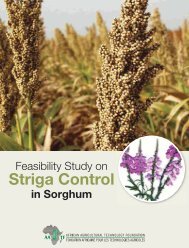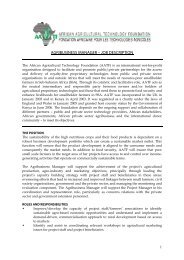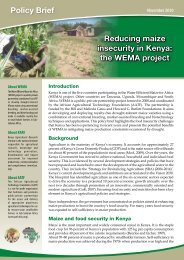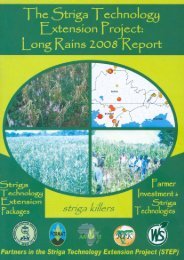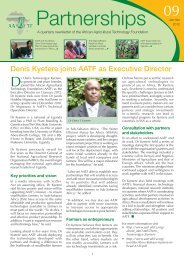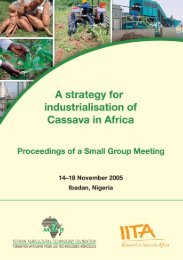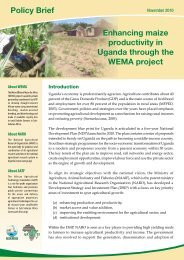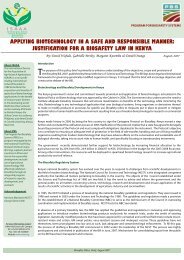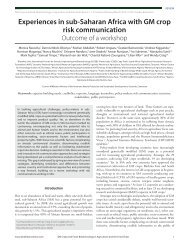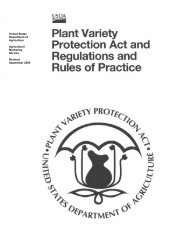Baseline Study of Striga Control using IR Maize in Western Kenya
Baseline Study of Striga Control using IR Maize in Western Kenya
Baseline Study of Striga Control using IR Maize in Western Kenya
You also want an ePaper? Increase the reach of your titles
YUMPU automatically turns print PDFs into web optimized ePapers that Google loves.
Figure 5.2b. Frequency <strong>of</strong> food shortages <strong>in</strong> western <strong>Kenya</strong> (months)Number <strong>of</strong> months6543210Nyanza<strong>Western</strong>Prov<strong>in</strong>ce5.4.2 Causes <strong>of</strong> food shortagesRespondents ranked <strong>Striga</strong> <strong>in</strong>festation and drought as the foremost causes <strong>of</strong> food shortages,this is followed by low soil fertility, land shortage, pest <strong>in</strong>festation and conflict (Table 5.5).There was no discrepancy <strong>in</strong> the ranks provided to the possible causes <strong>of</strong> food shortages byboth male-headed and female-headed households.Table 5.5. Rank <strong>of</strong> major causes <strong>of</strong> food shortages <strong>in</strong> western <strong>Kenya</strong>Nyanza<strong>Western</strong><strong>Striga</strong> <strong>in</strong>festation 1st 1 stDrought 1st 3 rdPest <strong>in</strong>festation 5th 6 thLow soil fertility 2nd 2 ndLand shortage 3rd 4 thLabour shortage 4th 5 thConflict 7th 7 thN = Number <strong>of</strong> respondents5.4.3 Strategies to mitigate food shortagesHouseholds evolve cop<strong>in</strong>g strategies to grapple with risk and uncerta<strong>in</strong>ty as well as to putundesirable situations under control. Different strategies employed by the households totackle food shortages are shown <strong>in</strong> Table 5.6. Results obta<strong>in</strong>ed po<strong>in</strong>ted to the fact thathouseholds relied on petty trad<strong>in</strong>g, short-term <strong>of</strong>f-farm employment, <strong>in</strong>formal safety nets(such as remittances) and disposal <strong>of</strong> household assets. Most <strong>of</strong> them said that these strategieswere not effective.Table 5.6. Strategies to mitigate food shortagesNyanza<strong>Western</strong>N 402 400Manag<strong>in</strong>g to survive on little food (%) 4.2 2.3Formal credit (%) 2 3.8Informal credit (%) 8.2 19.0Formal safety net (%) 10 9.3Informal safety net (%) 41 33.0Off-farm wage employment (%) 43.5 41.3Sell land/other assets (%) 21.9 1.8Bus<strong>in</strong>ess/petty trad<strong>in</strong>g (%) 61.7 38.5N = Number <strong>of</strong> respondents5.5 Anthropometric measurements on vulnerable groups5.5.1 Anthropometric <strong>in</strong>formation on childrenA number <strong>of</strong> anthropometric measurements are useful for the assessment <strong>of</strong> the quality <strong>of</strong>life/ livelihoods <strong>of</strong> a group <strong>of</strong> people. Most common <strong>in</strong>dicators for the assessment <strong>of</strong> the38




